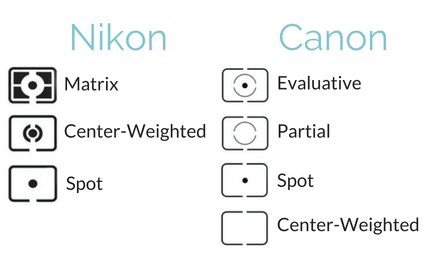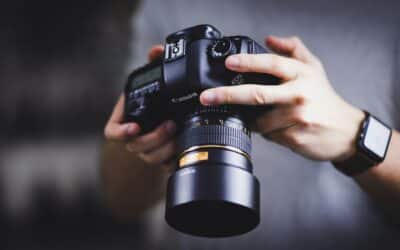Have you ever had images come out to bright or too dark? You might need to pay more attention to your metering and the mode that you are using. So what does metering do for you? It will measure the amount of bright and dark tones in your image and help you get the best exposure for your subject.
The first step to understanding any of your metering modes is remembering how your camera thinks about exposure. Everything your camera sees within the frame is averaged out to an 18% (middle) grey get the best exposure. A lot of the time this works well, however you still need to be smarter than your camera!
For example, if your subject is mostly white/bright, your camera will try to make it middle grey. By shooting at that metered reading, this will result in an underexposed image. The same goes for a subject that is overall dark tones. Your camera will try to overexpose the subject to bring it up to middle grey. By understanding how your camera meters, you’ll have more creative control over your results. So how do you determine what metering mode is best? Here are the three main modes explained.
Matrix Metering (Nikon)/Evaluative Metering (Canon)-
This is the main default metering mode for most DSLRs and evaluates the whole scene. The frame is divided up into zones. Each of these zones is analyzed depending on how bright or dark the tones within that section are. Then it looks to where you focused in the frame and marks that spot as most important, but still takes the rest of the frame into account.
Center-weighted Metering- In this mode, the camera evaluates the light from the subject in the middle of the frame and ignores the corners of the frame. This can work well if you have a back lit subject or they are front lit with a dark background that is composed in the middle of the frame. However, your subject must be composed within the middle of the frame.
Spot Metering- Spot metering is a personal favorite of mine. It only measures the light that is around your focus point and ignores everything else in the frame. This way during a portrait session, you can move your focus point onto your subjects face or eye and it will meter based off that exact point.
You may have noticed a fourth meter mode option in the photo above. This is the Partial Metering option that’s available with Canon DSLRs. It’s similar to Spot Metering, but with a slightly larger area.
For reference, here’s what the symbols will look like on your camera menu:
Bonus tip: If you are someone who “focuses and recomposes” in your frame AND prefers spot metering- you’ll want to make sure that you pay extra attention to your metering. When you recompose, it will meter based off the new spot that your focus point is over. So if you were metering/focusing on someone’s face, lock your focus, and recompose where your focus point is over a backlit sky you’ll end up with an underexposed image. You can solve this by assigning one of your buttons to be a Metering lock, similar to how you assign Back Button Focus.
Do you have a favorite metering mode you use? How has it helped improve your photography?
—
Are you ready to bring balance back to your business? And make time for more photography in your life? Give Iris Works a try! Sign up for FREE TRIAL today!








Recent Comments